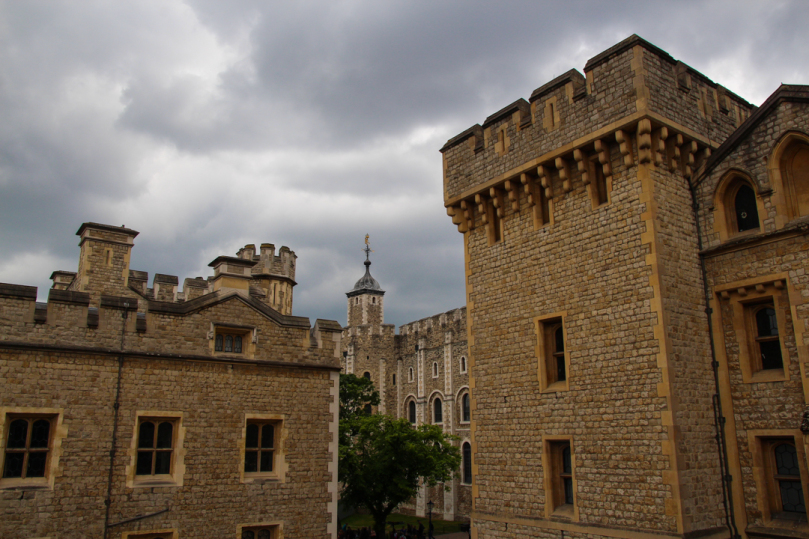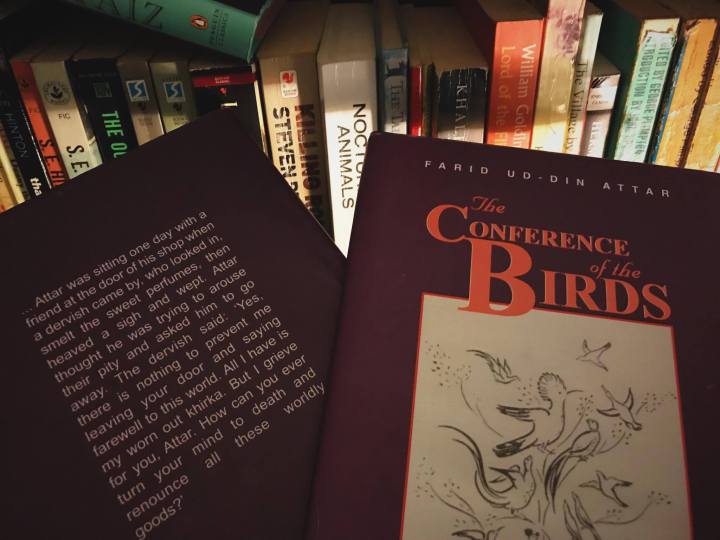I first visited London in April 2011 and I have to admit, I didn’t enjoy it too much. I had come to the UK for a concert, which I eventually missed and went straight to Oxford to stay with my friend Daria. While I was there, we only went to London once for a one day trip (which happened to coincide with the Royal Wedding of Prince William). I remember us walking from Big Ben to Tower Bridge and the castle catching my attention, but we didn’t have time to go inside then (you won’t have time for a lot of things if you’ll be in London for just one day to be honest).
I returned to London 4 years later also for a concert which I didn’t miss this time around (and it was such a mind-blowing experience seeing Godspeed You! Black Emperor perform at the Roundhouse that year). I got to spend more time there with this occasion, but we didn’t even consider visiting the castle. And even after moving here, I realized I never did consider visiting it. It was probably due to the fact that it’s such a popular place with the tourists that made me not want to go there.
Luckily, when my parents came to visit me here we went there together. And I simply loved it! I loved it so much that I had to go there again a week later when my boyfriend came to see me.
Short history of the Tower
The Tower of London dates from the time of William the Conqueror, the first Norman King of England and that makes it almost 1000 years old!
After his victory at the Battle of Hastings in 1066, William wanted to secure London, England’s most powerful city. He didn’t have to attack it as the leading men of London gave it up after seeing the havoc he was making on his way to the city. The Norman invader lacked the support of the people (I wonder why) and in order to consolidate his grip over the city he ordered the construction of several strongholds throughout London. One of the strongholds was built from wood on the site of the future Tower of London and was later replaced by the stone tower that we call today the ‘White Tower’. The building was immense and nothing like it had been seen in England before. It was a true display of William’s power at the time.

Fun fact: 1000 years before the Norman invasion, the Romans were the invaders led by Emperor Claudius (on the right). The Romans also wanted to impose their rule on the natives and so they founded Londinium (the Roman name for London) in AD 43. The Normans reused parts of the walls of the city (built around AD 200 AD) and a section of it can be seen today next to the Tower Hill underground station.
In time, the Tower of London underwent many extensions and by 1350 it was transformed into the impressive fortress that we all know.
During Richard the Lionheart’s reign (1189 – 1199), the fortress doubled in size by the addition of new buildings.
The Wakefield Tower, the Lanthorn Tower and another 9 towers were added to consolidate the fortress during the reign of Henry III (1216 – 1272).
King Edward I (1272 – 1307) completed the defensive works his father had begun and transformed the Tower into England’s largest and strongest concentric castle (with one ring of defences inside another).
St Thomas’s Tower (built by Edward I in 1275-1279) together with the Wakefield Tower and the Lanthorn Tower are known today as the ‘Medieval Palace’ and they used to form the residential area of the Tower. Monarchs never stayed there for long, but the lodgings had to be fit for kings.
Edward I’s bedchamber has been recreated and can be seen in the St Thomas tower today.
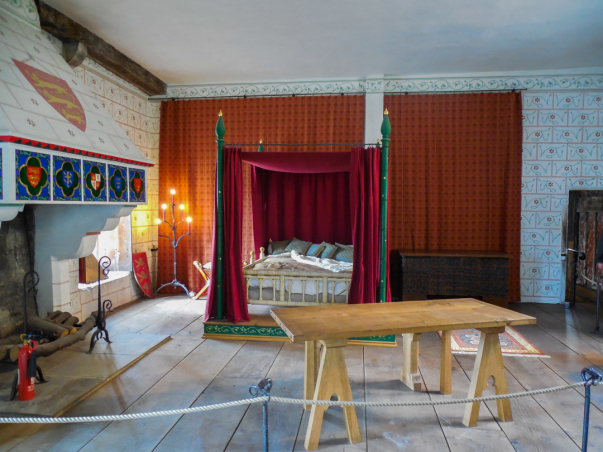 Replica of Edward I’s bedchamber
Replica of Edward I’s bedchamber
In the Wakefield Tower, built originally as the lodgings of Henry III, we can find a replica of a 13th century throne based on the descriptions of the throne on which Henry the III would have sit on when holding audience while at the Tower of London.
The chapel in the Wakefield Tower is connected to the death of Henry VI, who was imprisoned at the Tower during the time of the War of the Roses and was supposedly murdered while praying there.
 Wakefield Tower Chapel
Wakefield Tower Chapel 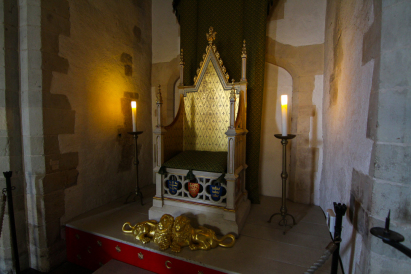 Replica of Henry III’s Throne
Replica of Henry III’s Throne  Wakefield Tower Ceiling
Wakefield Tower Ceiling
The Tower of London as a prison
Even though it was built as a fortress and royal residence, the castle is mostly famous for its role as a prison. Between 1100 and 1952, around 8000 people were incarcerated within its walls for different crimes like treason, conspiracy of murder and even sorcery.
The Beauchamp Tower has housed a lot of prisoners over the years and its walls are full of inscriptions left behind by its unlucky residents.
The inscriptions on the walls of the Salt Tower show that it was also used as a prison.
Some prisoners were given a lot of freedom, especially the ones that had royal blood.
John Balliol, the King of Scots, was forced to abdicate and surrender his kingdom to Edward I of England and he was imprisoned in the Tower in 1296. Although a prisoner there, he was given a lot of freedom. He was allowed to travel 21 miles of London and he always went hunting in the area.
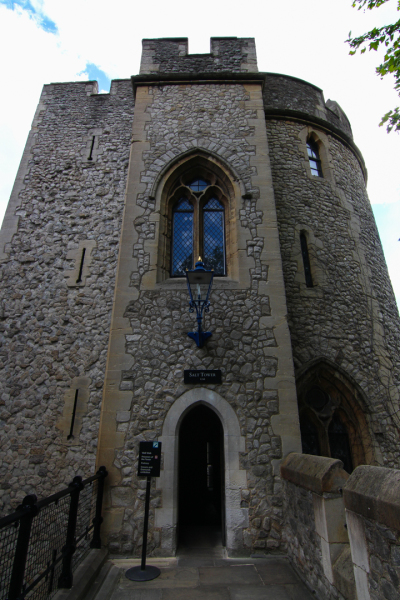 Salt Tower
Salt Tower 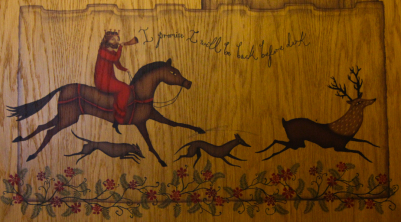 John Balliol, King of Scots (prisoner 1296-99)
John Balliol, King of Scots (prisoner 1296-99) 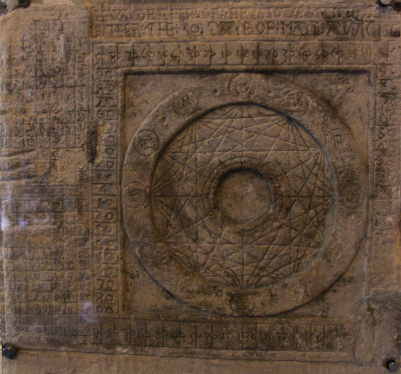 Inscription by Hew Draper (accused of sorcery) – 1561
Inscription by Hew Draper (accused of sorcery) – 1561
Tower Green is the place where some famous people were beheaded, including 2 of King Henry VIII’s Queens, Anne Boleyn and Catherine Howard, both accused of adultery.
Elizabeth I was also imprisoned briefly in the Tower under the suspicion of conspiring against her sister Mary Tudor, then Queen of England.
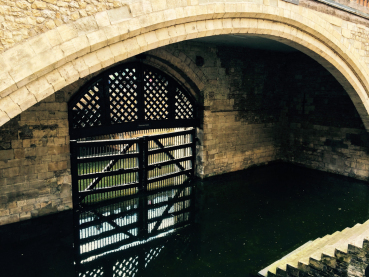 Traitors Gate
Traitors Gate
The notorious Traitors Gate was originally built to provide a water gate entrance to the tower but ended up being used for bringing prisoners to the Tower of London. They were brought by boat along the river Thames, passing under London Bridge, where the heads of recently executed prisoners were displayed on spikes (yikes!).
The Bloody Tower is associated with one of the most intriguing stories of the Tower’s history – the story of the 2 ‘Princes in the Tower’.
This refers to the disappearance and the supposed murder of the 2 sons of King Edward IV, Edward V – aged 12 and Richard – aged 9. The 2 boys had been locked up in the Tower on the orders of their uncle, the Duke of Gloucester, after their father’s sudden death in 1483. After being declared illegitimate a few months after their incarceration, their uncle became King Richard III and they were suddenly no where to be found.
Rumours rapidly spread about their death and it was believed that Richard III had had them murdered in order to maintain the throne.
Later, in 1674, the skeletons of two children were found hidden under the staircase leading to the Chapel of St John in the White Tower. Many people considered them to be the bodies of the 2 two sons of Edward IV. Charles II was one of the people that believed this and ordered the bones to be re-buried at the Westminster Abbey.
In 1933 the skeletons were forensically re-examined and it was concluded that they belonged to 2 children aged 10 and 12, matching the age of the 2 princes when they disappeared.
 The Princes in the Tower
The Princes in the Tower
The Tower of London as a Royal Menagerie
Apart from fortress, royal palace and prison, the Tower of London has had other weird uses. It was the place where King John (1199 – 1216) established a royal menagerie. Yes, a zoo!
A lot of exotic animals used to be held at the Tower of London including lions, a polar bear and an elephant. They didn’t live happy lives there as you can imagine. An ostrich apparently died in 1781 because visitors fed it more than 80 nails!
Around the tower you will see many life-size sculptures of menagerie animals.
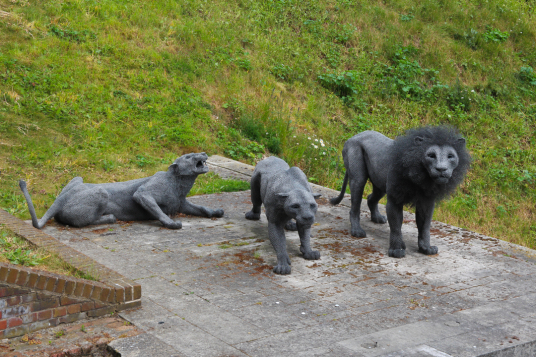
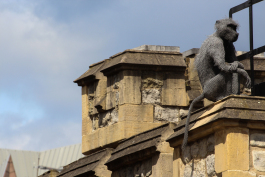
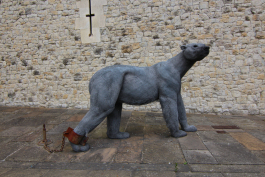
The Menagerie was closed in 1830 but today they still keep ravens at the tower.
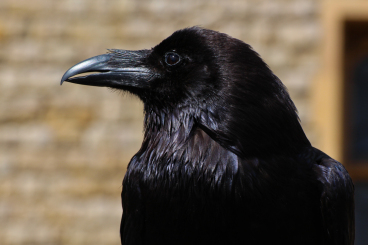
The legend says that the kingdom will fall when the ravens leave the Tower of London To keep that from happening, they decided to clip their wings so they wouldn’t fly away ;( They are well taken care of by the Raven Master, but for me, personally, it was a very sad thing to see.
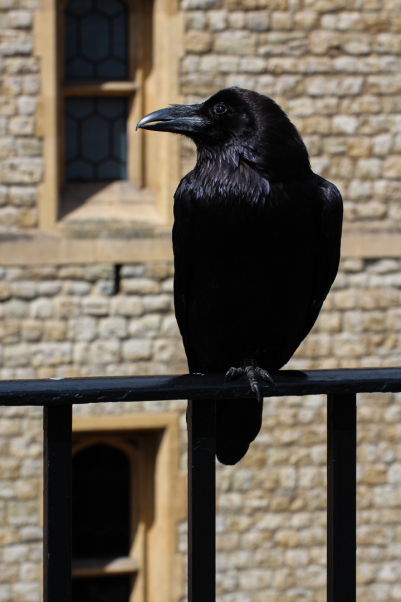
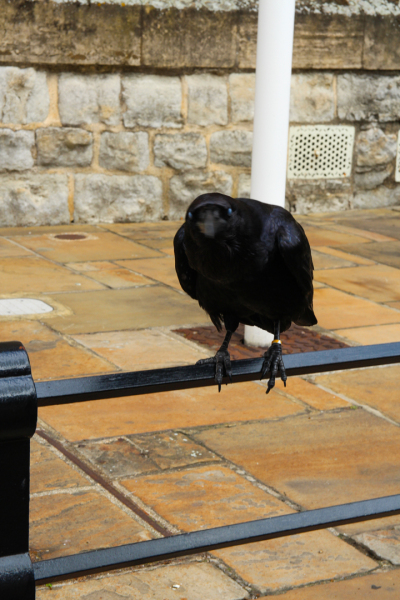
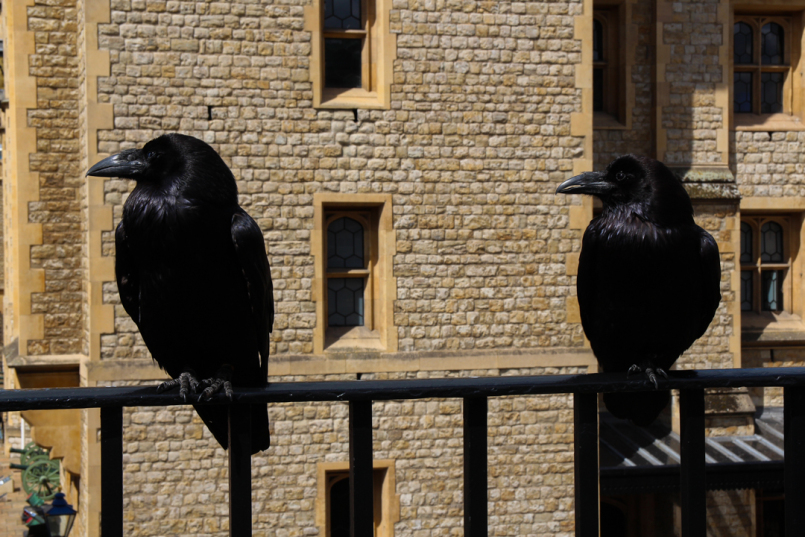
The White Tower and the Royal Armouries
The oldest and the innermost building of the fortress is the White Tower. It was called this way after Henry III had it whitewashed in the 13th Century.
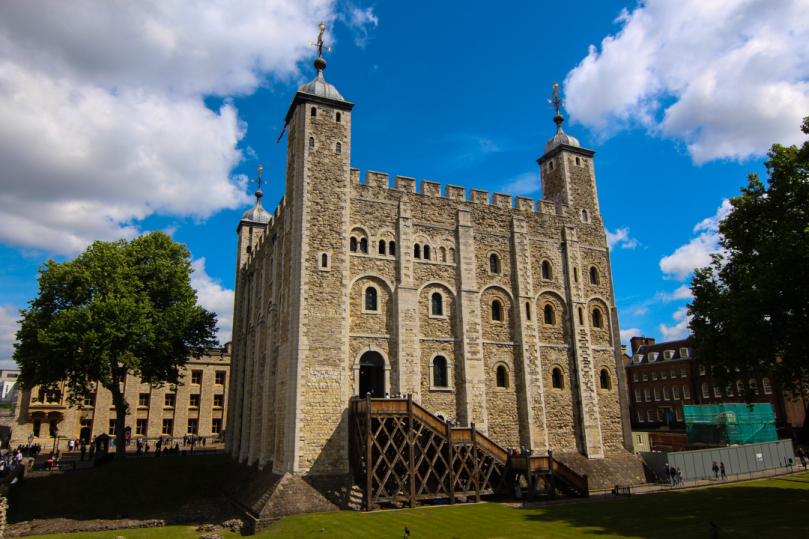 The White Tower
The White Tower


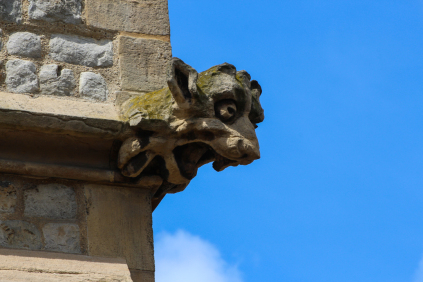
Nowadays the White Tower is the home of the Royal Armouries. The collection includes the 350-year old exhibition called the ‘Line of Kings’. Historic armours, including those of Henry VIII, Charles I and James II are displayed on carved horses and life-like wooden figures.


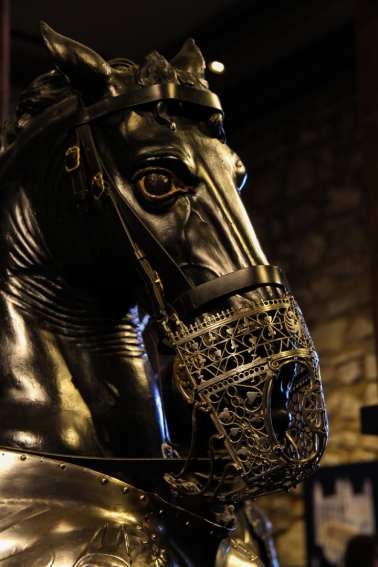
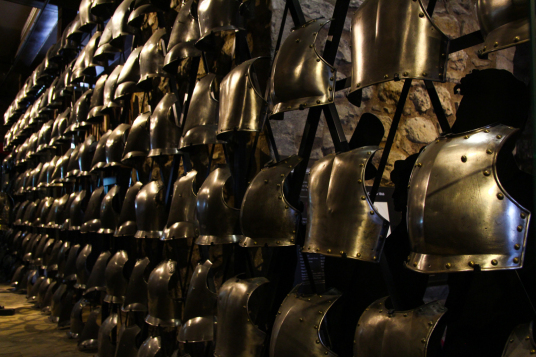
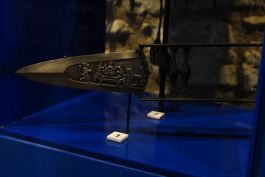
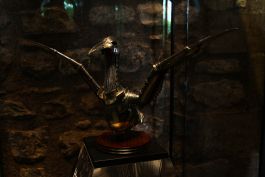
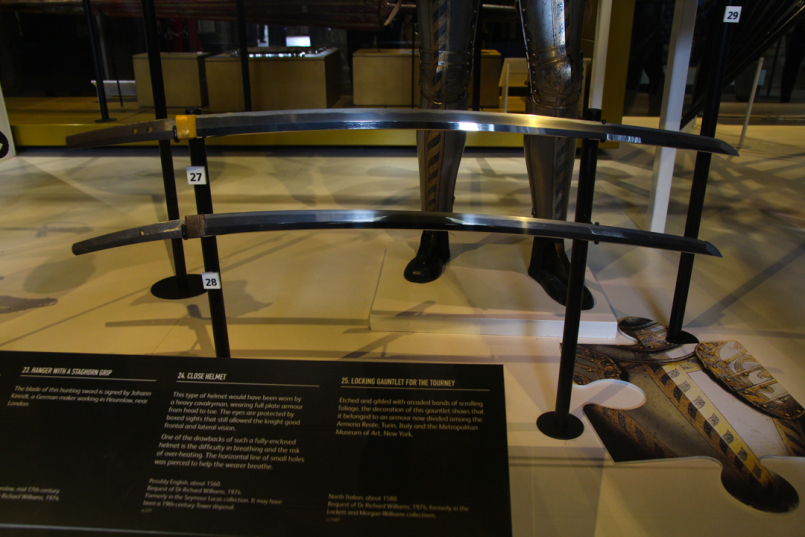
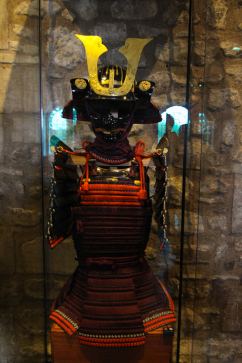
My favourite piece from the museum was a samurai armour from the 16th Century. This armour was a gift from Shogun Tokugawa Hidetada to King James I of England and it’s simply beautiful. I stared at it for quite some time.
The White Tower is also the home of St. John’s Chapel, one of the best-preserved Anglo-Norman church interiors and the finest example of Romanesque architecture in Britain.
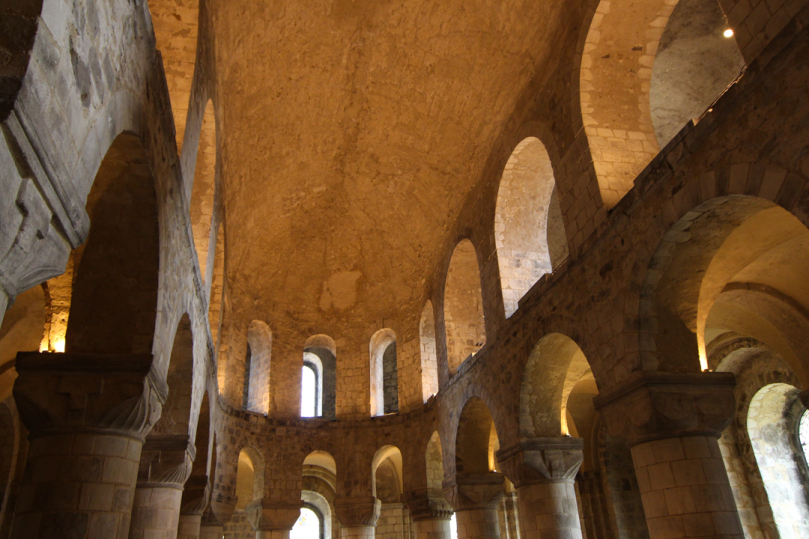 St. John’s Chapel
St. John’s Chapel

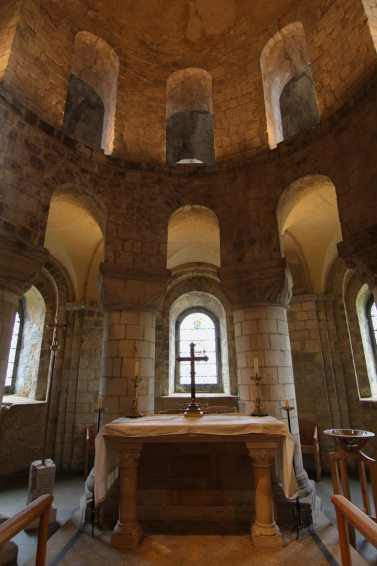

In the basement is where prisoners including Guy Fawkes (V for Vendetta anyone?) and John Gerard, English Jesuit priest, were tortured.
The Crown Jewels are also kept at the Tower but we did not get to see them. Expect a very very long queue if you want to also to enter the Jewel House, where they are being kept.
 Jewel House
Jewel House 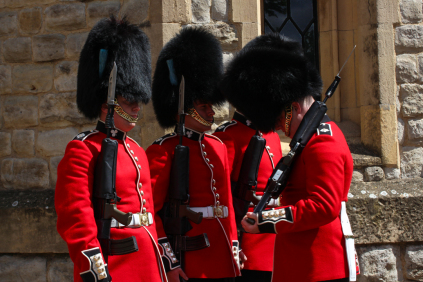 The Tower Guard
The Tower Guard  Royal Cipher of Queen Elizabeth II
Royal Cipher of Queen Elizabeth II
The Tower of London is a popular place and it can get quite crowded (it is one of the most famous castles in the world in its defence), but don’t let that make you miss the opportunity to visit it like it almost happened to me. It really is an amazing place, rich in history and I highly recommend finding the time to see it if you’re ever in London.
